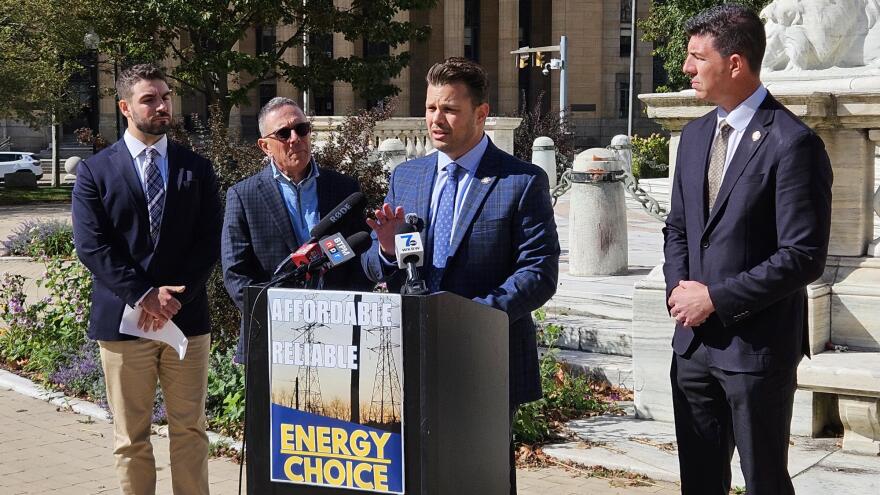Several New York State Assemblymembers have co-signed a letter to Governor Kathy Hochul, urging her to rethink the pace by which the state is legislating the phase-out of emissions to reach a goal of net zero by the year 2050. They say it’s a pace that is burdening homeowners and business with rising home and energy costs.
Paul Bologna (R-144), Patrick Chludzinski (R-143), joined local home construction and business leaders in downtown Buffalo to share their concerns about legislation including the Climate Leadership and Community Protection Act passed in 2019, and the All-Electric Building Act and All-Electric Vehicle Act, both set to take effect in 2026.
Under CLCPA, the State is to reduce emissions to 40% below 1990 levels by 2030 and then to 85% below 1990 levels by 2050. Under the “All-Electric” acts, most new building construction will phase out fossil fuels.
In the letter, authored by Bologna, lawmakers argue the benchmark mandates set within CLCPA have already caused home and energy costs to rise, while the “All-Electrics” will further strain an outdated and already stressed electrical grid.
“New York State does not have an energy supply problem. We have an energy transmission and capacity problem,” said Bologna in Buffalo Wednesday. “We have hydro power, we have natural gas, solar, wind, nuclear. The new mandates are putting all of our eggs in the electrical basket, meaning that what was once powered by natural gas is now going to have to be powered by electricity. To understand, our energy grid hasn't been updated in over 70 years.”
He noted that earlier this summer, Hochul and New York City mayor Eric Adams urged residents there to turn off their air conditioners, as the added use was stressing the power grid.
Chludzinski urged the governor to issue a five-year moratorium on the benchmarks set within CLCPL. He says since CLCPA was passed, electric rates have risen approximately 50 percent.
“The New York State Energy and Research Development Authority estimates that under the CLCPA, electricity costs could rise 64% and New York's annual baseline energy costs will reach $120 billion per year through 2040, which equates to over $1,200 per month per household,” he said. “Having to convert to all-electric will more than double a homeowner's cost for purchasing and powering appliances and heating systems.”
Phil Nanula, president of the Buffalo Niagara Builders Association, estimated it would cost anywhere from $10,000 to $25,000 to convert a building served by natural gas into an all-electric house.
“We have been accused of not being ready for the implementation of this, that we've had two years to be ready. Frankly, I could have built an electric house two years ago. I could build one tomorrow. It's not the issue. The issue is having enough electric to service it, and we know it's going to be a problem. The utilities know, and they've been expressing that,” Nanula said.
Josh Veronica, Manager of Government Affairs and Economic Development for Buffalo Niagara Partnership, suggests energy affordability and reliability are top concerns expressed to the Partnership by its members.
“This law will make it harder to develop housing, and the housing we do build will be more expensive and less safe,” he said. “But beyond making things less affordable and less reliable, this push for mass electrification is not practical.”
The letter to Governor Hochul was signed by 29 members of the Assembly, all Republicans.


